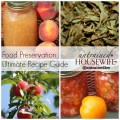I really hate to see food go to waste, and as I was cutting up a watermelon this year, I thought what a waste it was to put the watermelon rinds in the trash. I don’t have chickens anymore, and I don’t have a compost, so I really do feel like I am wasting them by putting them in the trash. I keep a to-do list on the fridge and when ideas come to me. I write them down on the pad. I wrote down, what do to with left over watermelon rinds?
After scouring the web, I found over 30 different varieties of pickled watermelon rind recipes. Even Paula Dean has her version of a pickled watermelon rind, so my thoughts of the rind going to waste were not the first. As I kept reading I noticed more than half of the recipes were calling for cinnamon and cloves. And my first thought is those recipes are for candied rinds, not pickled. Until I found the best recipe so far!

The recipe called for fresh garlic, fresh dill, and mustard seed. Now we are on the right track folks. I want it to taste like a pickle not a candy. Also I noticed that the same recipes that were calling for cinnamon and cloves was also telling me to cook the rinds until tender and then pouring the syrup on top and continuing to boil for another 30 mins, then POURING the mixture into glass jars. So I kept reading…
Prep note: Before even thinking of starting this project, cut up your watermelon and cut the rind into 1 in x 2 in strips. It is up to you if you want to leave some pink flesh on the rinds. I put my rinds in a plastic container and kept them in the fridge for over 2 weeks, while I would cut up watermelons and store the rinds for this use. So I had a lot of rinds to work with. I would say I had (2) 10lb water melons that made about 9 cups of rinds, perhaps more.
Tools:
- Large 32 oz mason jars – sterilized in a hot water or dishwasher
- Lids & rings – sterilized in hot water
- Magnetic stick (for grabbing the lids)
- Canning Tongs
- Canning Pot
- Cutting board & knife
- Wide mouth funnel
Ingredients:
- Watermelon rinds
- Fresh garlic 2-3 cloves
- Fresh dill, 2-3 sprigs per jar
- ½ tsp of mustard seed
- 2 cups of water
- ¼ cup of salt
Make your brine first, take the water and bring to a boil, then turn off stove. Add salt and mix to dissolve.
While water is coming to a boil, remove green skin from outside of the rinds. And trim down pink flesh if you are choosing to keep it on. If you are using smaller than 32 oz wide mouth jars, then cut your strips in to 1 in x 1 in.
Using your canning tongs remove your sterilized jar and after it is cool to the touch (about 2-3 mins) start packing your rind strips into the jar. You want to pack them in standing up (think like a pickle jar) and don’t forget your sliced garlic, fresh dill sprigs, and mustard seeds while you are packing in the rinds. You will be surprised how many rinds will fit into the jar. Repeat this process until the rinds have all been packed in to jars.
Then press down the rinds to get the air pockets out. At this time you will notice your jar is full of liquid. After I was sure my rinds were really packed in. I carefully put the jar upside down into a strainer, letting the liquid drip out. If you did a good job packing it in, nothing will fall out, but just in case you have the strainer to save whatever falls out.
After liquid has dripped out, test with your pinky finger if the brine is room temp. If it is, using the wide mouth funnel pour the brine into the jars, leaving ¼ of room at the top. Press down with a spoon to get all the air pockets out, refill with more brine if necessary.
Using the magnetic stick to grab the lids, put lids on and tighten rings finger tight. Then put into the canning bath (pot) and make sure there is at least 1 inch of water on top of your tallest jar. Let it boil for 10 mins. Remove using your tongs and set aside to cool. After cool put into a dark, cool cabinet for at least a week. Sample and return to cabinet for longer fermentation if needed.









Wow, I never even knew you could pickle watermelon rinds! Thanks for the information and recipe 🙂
But there is no vinegar in this recipe? Isn’t that unsafe to water bath can due to the lack of acidity?
This method is dangerously unsafe. Canning using a hot water bath requires a certain amount of acid whether it be from the food itself or by the addition of vinegar or another acid. The only exception is if it is fermented long enough to have the proper PH. This recipe mentions fermentation, but it is impossible to ferment in a sterile and sealed environment. The bacteria that causes fermentation is killed during the hot water bath.